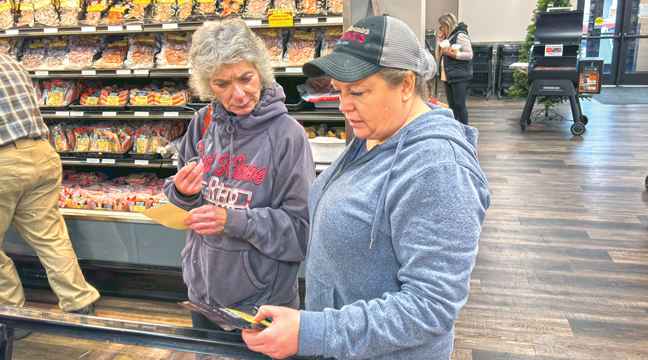In Minnesota, where our waterways are arguably one of the most critical resources to our economy and way of life, the presence of aquatic invasive species (AIS) is an extremely concerning issue. In August of 2015 starry stonewort, an invasive macro algae that looks like an aquatic plant, was discovered within Lake Koronis, Stearns County.
This represented the first known infestation within the State of Minnesota. With the August/September 2016 discoveries of starry stonewort within another Stearns County lake as well as lakes in Cass, Itasca and Beltrami Counties, this AIS has now reached seven Minnesota lakes that we know of. It appears as though starry stonewort is here to stay.
It is important to distinguish the difference between “non-native” and “invasive” species. Some plants or animals that are introduced to our state may be from other regions (non-native), but not necessarily invasive. Introduced species described as being invasive are given that title because of their ability to outcompete our native vegetation and animals. In the case of starry stonewort, this macro algae, which looks like a green aquatic plant, has shown the ability to grow in dense carpets along the bottom of some lakes and reach up into the water column with its structure as well. The impacts of AIS can be devastating and can be ecological, economical and recreational; beneficial native plant growth is suppressed, the water chemistry of the area may change, local tourism may decrease, and activities such as swimming, boating or fishing become difficult or impossible.
The primary means of AIS spread are through watercraft transport. Currently, there are no known means of fully eradicating most AIS; management through a number of means is possible but often quite expensive and time consuming. Prevention and education have thus been a primary focus of AIS managers, researchers and volunteers, though innovative management techniques continue to be researched in hopes of finding an AIS “cure”.
With the passing of Minnesota’s AIS Prevention Aid program (MN Statutes 477A.19) in 2014, counties within the state are distributed funds annually in order to prevent and limit the spread of AIS. Sherburne County, by resolution, delegated the Sherburne Soil and Water Conservation District (SWCD) to oversee expenditures with this money to fulfill the programs purpose.
Sherburne SWCD has actively pursued several endeavors designed to 1) increase awareness and education of AIS, 2) detect early AIS infestations in county lakes, 3) enforce state AIS regulations, and 4) provide opportunities for lake stakeholders to engage the process through grant and networking programs. Some of these activities have been passive, such as the creation of informational signs and billboards, social media posts, and distribution of AIS promotional items. Others actions have been more active and have included trainings on AIS detection and watercraft decontamination, monitoring of lakes for early signs of AIS infestation, educational courses within local schools, and the formation of a coalition of county lake groups to unite in confronting the issue of AIS as well as other concerns. A grant program designed to financially assist lake groups with AIS prevention is currently in development and anticipated to be available in early 2017.
True, new introductions of AIS have been documented in Minnesota each year. However research has shown that awareness of the issue is at an all-time high and the rate of dispersal has slowed significantly. Sherburne SWCD and numerous volunteers will continue to work to prevent AIS introduction, address new infestations should they arise, and collaborate with lake associations and industry professionals to understand effective solutions to keep our lakes and streams healthy and free from this emerging threat.
For more information on becoming involved in county-wide AIS efforts, contact Dan Cibulka, Water Resource Specialist, at the Sherburne SWCD (763-567-5369 or dcibulka@sherburneswcd.org).








